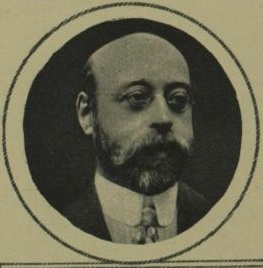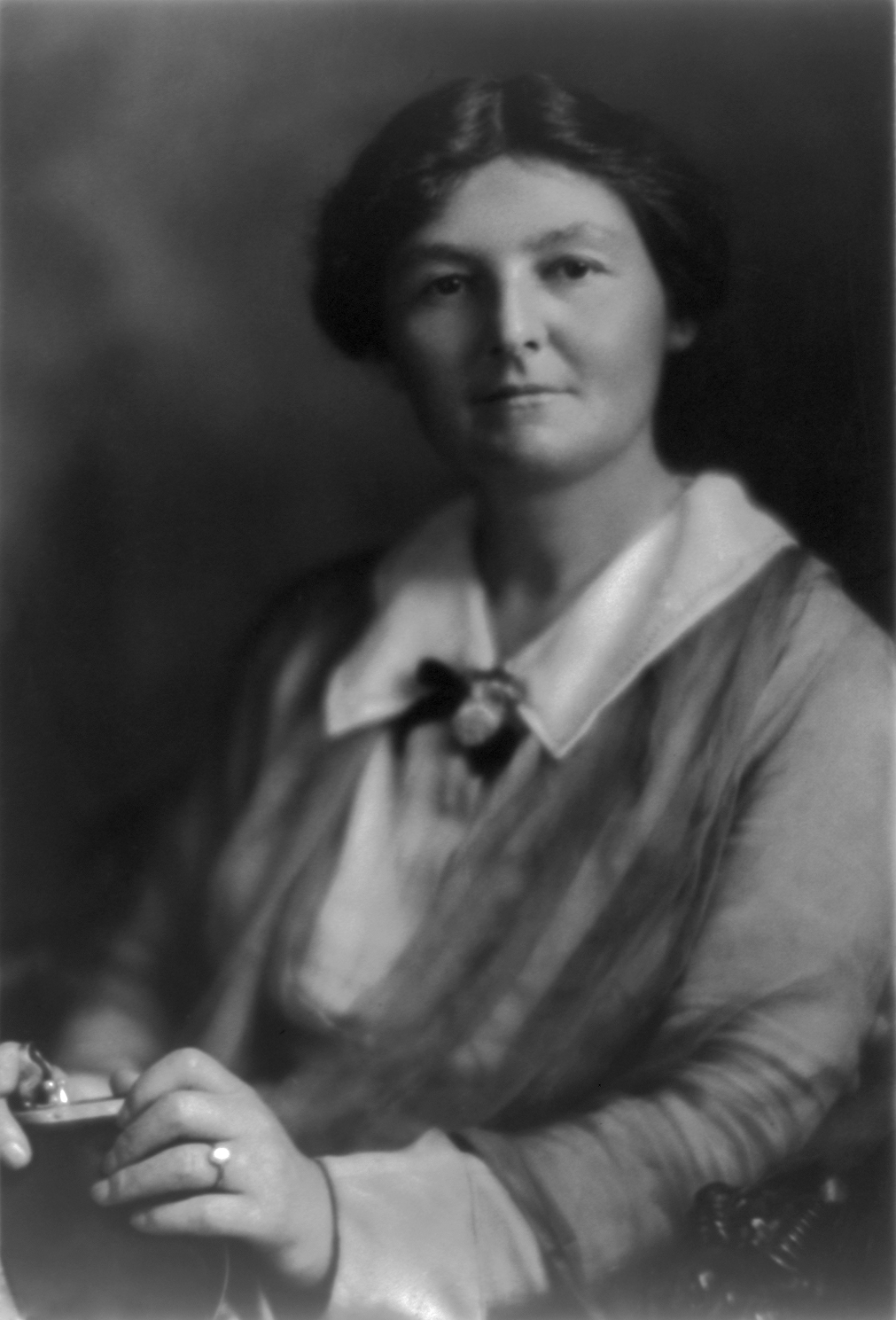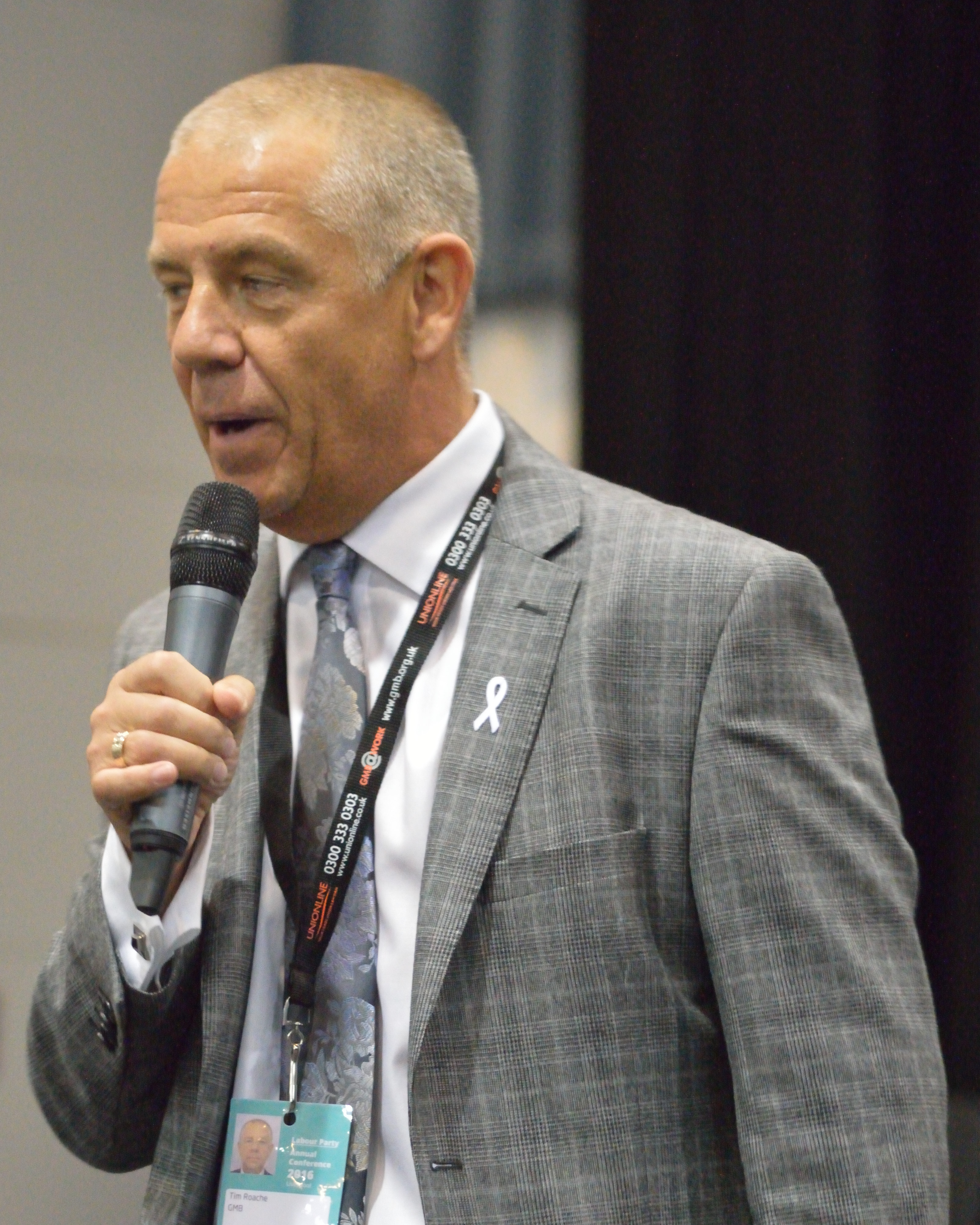The General Council of the Trades Union Congress is an elected body which is responsible for carrying out the policies agreed at the annual British
Trade Union Congress
The Trades Union Congress (TUC) is a national trade union centre, a federation of trade unions in England and Wales, representing the majority of trade unions. There are 48 affiliated unions, with a total of about 5.5 million members. Frances ...
es (TUC).
Organisation
The council has 56 members, all of whom must be proposed by one of the unions affiliated to the TUC. Unions with more members receive an automatic allocation of seats, in proportion to their membership. Smaller unions propose candidates for eleven elected seats. In addition, there are separately elected seats: four for women, three for black workers, at least one of whom must be a woman, and one each for young workers, workers with disabilities, and LGBT workers. The
General Secretary
Secretary is a title often used in organizations to indicate a person having a certain amount of authority, power, or importance in the organization. Secretaries announce important events and communicate to the organization. The term is derived ...
also has a seat on the council.
Trades Union Congress
The Trades Union Congress (TUC) is a national trade union centre, a federation of trade unions in England and Wales, representing the majority of trade unions. There are 48 affiliated unions, with a total of about 5.5 million members. Frances ...
,
General Council and TUC structure
Some members of the council are further elected to serve on the smaller Executive Committee of the TUC. The
President of the Trades Union Congress The President of the Trades Union Congress is a prominent but largely honorary position in British trade unionism.
History
Initially, the post of president was elected at the annual Trades Union Congress (TUC) itself, and would serve just for the ...
is also chosen by the General Council.
Although the TUC has long had links with the
Labour Party, members of the General Council are not permitted to sit on Labour's
National Executive Committee.
History
1921 to 1983
Until 1921, the leading body of the TUC was the
Parliamentary Committee
A committee or commission is a body of one or more persons subordinate to a deliberative assembly. A committee is not itself considered to be a form of assembly. Usually, the assembly sends matters into a committee as a way to explore them more ...
. This had seventeen members, but by the collapse of the
Triple Alliance, it was considered ineffective and to have insufficient powers in industrial matters.
The new General Council had 32 members, elected from industrial groups, each consisting of one or more unions operating in a particular industry. Two of the places were reserved for women. It received additional powers to intervene in the case of major industrial disputes, and to resolve inter-union conflicts. In 1924, the Joint Consultative Committee was set up, which brought
trades council A labour council, trades council or industrial council is an association of labour unions or union branches in a given area. Most commonly, they represent unions in a given geographical area, whether at the district, city, region, or provincial or ...
s ultimately under the control of the General Council. However, these powers were not always exercised; many members of the council in the early years were elected on grounds of seniority, rather than recent accomplishments. Some were associated with left- and right-wing factions, although most were not strongly identified with a particular wing of the movement.
Changes to the groups and numbers of seats were made over time, as the number of workers represented in different industries fluctuated,
Trades Union Congress
The Trades Union Congress (TUC) is a national trade union centre, a federation of trade unions in England and Wales, representing the majority of trade unions. There are 48 affiliated unions, with a total of about 5.5 million members. Frances ...
, ''Report of Proceedings at the 83rd Annual Trades Union Congress'', p.299 but the system survived intact until the early 1980s.
Group 1: Mining and Quarrying
Most of the members elected from Group 1 represented the large
Miners' Federation of Great Britain
The Miners' Federation of Great Britain (MFGB) was established after a meeting of local mining trade unions in Newport, Wales in 1888. The federation was formed to represent and co-ordinate the affairs of local and regional miners' unions in Engla ...
, or its successor, the
National Union of Mineworkers, but there were several smaller unions which often managed to win one seat.
Group 2: Railways

Throughout this period, Group 2 comprised three railway unions: the
Associated Society of Locomotive Engineers and Firemen (ASLEF),
National Union of Railwaymen (NUR) and
Transport Salaried Staffs' Association
The Transport Salaried Staffs' Association (TSSA) is a trade union for workers in the transport and travel industries in the United Kingdom and Ireland. Its head office is in London, and it has regional offices in Bristol, Derby, Dublin, ...
(TSSA). Each usually saw its general secretary elected to one of the three seats, although the abolition of one seat in 1969 left a battle between ASLEF and the TSSA for the second seat.
Group 3: Transport (other than railways)

By far the largest union in Group 3 was the
Transport and General Workers' Union
The Transport and General Workers' Union (TGWU or T&G) was one of the largest general trade unions in the United Kingdom and Ireland – where it was known as the Amalgamated Transport and General Workers' Union (ATGWU) to differentiate ...
(TGWU), although representatives of the
National Union of Seamen and a couple of minor unions often secured one seat.
Group 4: Shipbuilding

The
Amalgamated Society of Boilermakers dominated Group 4, with various smaller unions gradually merging into it or the general unions.
Group 5: Engineering, Founding and Vehicle Building

Group 5 contained a large number of unions - 26 in 1934 - and while the
Amalgamated Engineering Union
The Amalgamated Engineering Union (AEU) was a major British trade union. It merged with the Electrical, Electronic, Telecommunications and Plumbing Union to form the Amalgamated Engineering and Electrical Union in 1992.
History
The history of t ...
(AEU) reliably won at least one seat, unions like the
Electrical Trades Union (ETU) and
United Patternmakers' Association (UPA) often won seats.
Group 6: Technical, Engineering and Scientific
Group 7: Electrical
Group 8: Iron and Steel and Minor Metal Trades
The Iron and Steel and Minor Metal Trades Group was originally Group 6, but was renumbered in 1968. The
Iron and Steel Trades Confederation (ISTC) was the largest union in the group, and consistently held one of its seats. Until 1966, there was a second seat, held by the tiny
National Union of Gold, Silver and Allied Trades (NUGSAT), and later by the
National Union of Blastfurnacemen (NUB). There were many other small unions in the group - in 1934, it had 23 members.
Group 9: Building, Woodworking and Furnishing

The Building, Woodworking and Furnishing Group was originally Group 7, but was renumbered in 1965. While there were initially a large number of unions in the group, the
Amalgamated Union of Building Trade Workers
The Amalgamated Union of Building Trade Workers (AUBTW) was a British trade union.
History
The AUBTW was founded in 1921 when the Operative Society of Masons, Quarrymen and Allied Trades of England and Wales, the Operative Bricklayers' Socie ...
(AUBTW) and
Amalgamated Society of Woodworkers
The Amalgamated Society of Woodworkers (ASW) was a British trade union representing carpenters, joiners and allied trades. The ASW was formed in 1921 by the amalgamation of two smaller unions. It was itself merged into the Union of Constructio ...
(ASW) generally won the seats, and later became part of the
Union of Construction, Allied Trades and Technicians
The Union of Construction, Allied Trades and Technicians (UCATT) was a British and Irish trade union, operating in the construction industry. It was founded in 1971, and merged into Unite on 1 January 2017.
It was affiliated to the Trades U ...
(UCATT), which dominated the group from the 1970s. The
National Amalgamated Furnishing Trades Association
The National Amalgamated Furnishing Trades Association (NAFTA) was a trade union representing workers involved in making furniture in the United Kingdom.
History
The union was founded in 1902 from the merger of the Alliance Cabinet Makers' Associ ...
(NAFTA) won a seat in the early years, and pursued an independent course throughout this period.
Group 9: Cotton

The Cotton Group was the original Group 9; in 1968, it was merged into the Textiles Group. The cotton industry had a large number of small trade unions, and in 1934, the group had 46 members. Unusually, the majority of individual members of the unions were women, but the seats were always won by men, representing one of the three amalgamations to which most of the unions belonged: the
Amalgamated Weavers' Association
The Amalgamated Weavers' Association, often known as the Weavers' Amalgamation, was a trade union in the United Kingdom. Initially, it operated in competition with the North East Lancashire Amalgamated Weavers' Association in part of its are ...
(AWA), the
Amalgamated Association of Operative Cotton Spinners
The Amalgamated Association of Operative Cotton Spinners and Twiners, also known as the Amalgamation, was a trade union in the United Kingdom which existed between 1870 and 1970. It represented male mule spinners in the cotton industry.
His ...
(AAOCS), and the
Cardroom Amalgamation
The Cardroom Amalgamation or Cardroom Workers' Amalgamation (CWA)Joseph L. White, ''The Limits of Trade Union Militancy'', p.240, note 9 was a British trade union which existed between 1886 and 1974. It represented workers in the cotton text ...
(CWA).
Group 10: Printing and Paper
The Printing and Paper Group was originally Group 8, but was renumbered in 1968. Almost all of its members were involved with printing, and in the early years, the seat was contested by four larger unions: the
London Society of Compositors
The London Society of Compositors was a British trade union, representing print workers in London.
History
The union was founded as the London Union of Compositors in 1834 by the merger of the London Trade Society of Compositors and the Lon ...
(LSC),
National Society of Operative Printers and Assistants
The National Society of Operative Printers and Assistants (NATSOPA) was a British trade union.
History
Formed as part of the New Unionism movement in September 1889, the union was originally named the Printers' Labourers' Union and was led ...
(NATSOPA),
National Union of Printing, Bookbinding and Paper Workers
The National Union of Printing, Bookbinding and Paper Workers (NUPBPW) was a British trade union.
History
The union was founded in 1921 as the National Union of Printing, Bookbinding, Machine Ruling and Paper Workers when the National Union o ...
(NUPBPW), and
Typographical Association
The Typographical Association (TA) was a trade union representing typographers in the United Kingdom and Ireland.
History
The National Typographical Association collapsed in 1848, and delegates from across Yorkshire and Lancashire met at Ange ...
(TA).
Over the years, these undertook a series of mergers, forming new unions, including the
Society of Graphical and Allied Trades
The Society of Graphical and Allied Trades (SOGAT) was a British trade union in the printing industry.
History
SOGAT was formed in 1966 by the National Union of Printing, Bookbinding and Paper Workers and the National Society of Operative ...
(SOGAT).
Group 11: Textiles

The Textiles Group was originally Group 10: Textiles (other than cotton). Although there were a wide variety of unions - 18 in 1934 - the
National Union of Textile Workers (NUTW), and then its successor, the
National Union of Dyers, Bleachers and Textile Workers
The National Union of Dyers, Bleachers and Textile Workers (NUDBTW) was a trade union in the United Kingdom.
History
The union was founded in 1936 with the merger of the National Union of Textile Workers, which was the main union representin ...
(NUDBTW), almost always won the seat.
In 1968, the cotton group was merged in, forming Group 11: Textiles, and while the dyers generally won the seat (latterly as a section of the
Transport and General Workers' Union
The Transport and General Workers' Union (TGWU or T&G) was one of the largest general trade unions in the United Kingdom and Ireland – where it was known as the Amalgamated Transport and General Workers' Union (ATGWU) to differentiate ...
(TGWU), the main cotton workers' union, the
National Union of Textile and Allied Workers (NUTAW), held it for a few years.
Group 12: Clothing
The Clothing Group was dominated by the
National Union of Tailors and Garment Workers
National may refer to:
Common uses
* Nation or country
** Nationality – a ''national'' is a person who is subject to a nation, regardless of whether the person has full rights as a citizen
Places in the United States
* National, Maryland, c ...
(NUTGW), which gradually absorbed the smaller unions of tailors. It also included unions for hosiery workers which eventually merged as the
National Union of Hosiery and Knitwear Workers
National may refer to:
Common uses
* Nation or country
** Nationality – a ''national'' is a person who is subject to a nation, regardless of whether the person has full rights as a citizen
Places in the United States
* National, Maryland, c ...
, and the two
Felt Hatters' and Trimmers' Unions of Great Britain.
Originally Group 11, in 1968 it absorbed the Boot, Shoe and Leather Group, and was renumbered as Group 12.
Group 12: Boot, Shoe and Leather

The Boot, Shoe and Leather Group was dominated by the
National Union of Boot and Shoe Operatives
The National Union of Boot and Shoe Operatives (NUBSO) was a trade union in the United Kingdom which existed between 1873 and 1971. It represented workers in the footwear industry.
History
The union was founded in 1873, when many riveters and ...
(NUBSO). It also included smaller rivals, notably the
Rossendale Union of Boot, Shoe and Slipper Operatives
The Rossendale Union of Boot, Shoe and Slipper Operatives was a trade union representing workers in the footwear trade in the Rossendale area of Lancashire.
The union was founded in 1895,University of Warwick Modern Records Centre
The Mode ...
, unions of leather workers, and the
National Union of Glovers.
The Boot, Shoe and Leather Group was the original Group 12, but in 1968 it was merged into the Clothing Group.
Group 13: Glass, Pottery, Chemicals, Food, Drink, Tobacco, Brushmaking and Distribution

Group 13 was highly diverse. The most important unions were those involved in distribution, the
National Amalgamated Union of Shop Assistants, Warehousemen and Clerks (NAUSAWC) and the
National Union of Distributive and Allied Workers
The National Union of Distributive and Allied Workers (NUDAW) was a trade union in the United Kingdom.
History
The union was founded in 1921, when the Amalgamated Union of Co-operative Employees merged with the National Union of Warehouse and ...
(NUDAW), which later merged to form the
Union of Shop, Distributive and Allied Workers.
In 1952, a second seat was added, and this was invariably filled by representatives of smaller unions, the largest of which were the
Bakers', Food and Allied Workers' Union (BFAWU) and the
National Society of Pottery Workers (NSPW). There were many smaller unions, and the
Tobacco Workers' Union
The Tobacco Workers' Union (TWU) was a trade union representing workers in all areas of the tobacco industry in the United Kingdom.
History
The union was founded in 1834 in London as the Friendly Society of Operative Tobacconists. Two years ...
(TWU) secured representation for a few years.
Group 14: Agriculture

For most of the period, the
National Union of Agricultural and Allied Workers
The National Union of Agricultural and Allied Workers (NUAW) was a trade union in the United Kingdom which existed between 1906 and 1982. It represented farmworkers.
History
The union was established as the Eastern Counties Agricultural Labo ...
(NUAAW) was the only union in Group 14. The
Scottish Farm Servants' Union, initially also in this group, merged into the
Transport and General Workers' Union
The Transport and General Workers' Union (TGWU or T&G) was one of the largest general trade unions in the United Kingdom and Ireland – where it was known as the Amalgamated Transport and General Workers' Union (ATGWU) to differentiate ...
early on.
Group 15: Public Employees
Group 15 brought together unions of state and local authority workers. However, the
Trade Union Act 1927 banned state employees from joining the TUC, leaving the group dominated by the
National Union of Public Employees (NUPE),
Mental Hospital and Institutional Workers' Union (MHIWU),
National Union of County Officers and
Fire Brigades Union
The Fire Brigades Union (FBU) is a trade union in the United Kingdom for wholetime firefighters (including officers up to chief fire officer / firemaster), retained firefighters and emergency control room staff.
History
The first recorded ins ...
(FBU).
The ban was lifted after World War II, but a new group was added for civil servants. Despite this, the public employees group steadily grew in size, the affiliation of the
National and Local Government Officers' Association and the
National Union of Teachers being particularly important, while the
Confederation of Health Service Employees (COHSE) absorbed the MHIWU.
Group 16: Civil Servants
The Civil Servants Group was added in 1946, when unions of civil servants were first permitted to affiliate to the TUC.
Group 17: Non-Manual Workers

The Non-Manual Workers Group consisted of clerks, insurance staff, workers in entertainment, and doctors. Many of its unions grew rapidly during this period, with the
Association of Professional, Executive, Clerical and Computer Staff (APEX),
National Association of Theatrical and Kine Employees
The National Association of Theatrical Television and Kine Employees (NATTKE) was a trade union in the United Kingdom which existed between 1890 and 1984. It represented employees who worked in theatres, cinemas and television.
History
Th ...
(NATKE) and
Association of Cinematograph, Television and Allied Technicians (ACTT) becoming important.
The
National Federation of Insurance Workers - later part of the
National Union of Insurance Workers - was also sizable,
but never gained a seat on the council, unlike the smaller
Musicians' Union.
The Non-Manual Workers Group was originally Group 16 and was renumbered on the creation of the Civil Servants Group, in 1946.
Group 18: General Workers
There were initially a large number of unions of general workers, but within a couple of decades, they had all been absorbed into two large general unions - the
National Union of General and Municipal Workers
The GMB is a general trade union in the United Kingdom which has more than 460,000 members. Its members work in nearly all industrial sectors, in retail, security, schools, distribution, the utilities, social care, the National Health Service (N ...
(NUGMW), which became the sole union in this group, and the
Transport and General Workers' Union
The Transport and General Workers' Union (TGWU or T&G) was one of the largest general trade unions in the United Kingdom and Ireland – where it was known as the Amalgamated Transport and General Workers' Union (ATGWU) to differentiate ...
, which was instead placed in Group 3.
The General Workers Group was originally Group 17 and was renumbered on the creation of the Civil Servants Group, in 1948.
Group 19: Women Workers


In 1921, the
Women's Trade Union League
The Women's Trade Union League (WTUL) (1903–1950) was a U.S. organization of both working class and more well-off women to support the efforts of women to organize labor unions and to eliminate sweatshop conditions. The WTUL played an importa ...
became the Women's Section of the TUC, and most women's trade unions merged into their counterparts. In exchange, the TUC agreed to create a two-member group, to ensure that women workers had representation on the council.
The group was originally numbered 18, and was renumbered on the creation of the Civil Servants Group.
The group was expanded to five seats in 1981.
1983 to present
After many years of discussion, a comprehensive restructure of the council was agreed in 1982, and took place following the annual TUC meeting in September 1983. Initially, the new council had 53 members, with those unions with more than 100,000 members gaining automatic seats and therefore becoming eligible to nominate members without them being subject to a vote of other unions. Six seats were initially reserved for women.
Trades Union Congress
The Trades Union Congress (TUC) is a national trade union centre, a federation of trade unions in England and Wales, representing the majority of trade unions. There are 48 affiliated unions, with a total of about 5.5 million members. Frances ...
,
TUC General Council members
"
Section A: Larger unions
=Current members
=




=Former members
=







Section B: Unions with 30,000 to 200,000 members
Section B originated as part of Section A, unions with 100,000 to 200,000 members being automatically entitled to one seat on the council.
In 1989, these unions were moved to a new Section B, but there were no changes to their entitlement of seats.
Unions with 30,000 to 99,999 members moved to Section B in 2012.
Section C: Other unions
Unions with fewer than 100,000 members were placed in Section B until 1989.
In 1989, the section for small unions was renamed Section C, and was reduced to eight members.
Increased to 11 members in 2001.
In 2012, unions with 30,000 to 99,999 members were moved to Section B, and Section C was reduced to seven members.
Section D: Women

Reduced to four members in 1989.
Sections E, F and G: Black workers
Section H: Disabled workers
Created 2001
Section I: LGBT workers
Created 2001
Section J: Young workers
Created 2001
References
{{Authority control
1921 establishments in the United Kingdom
Trades Union Congress
 Throughout this period, Group 2 comprised three railway unions: the Associated Society of Locomotive Engineers and Firemen (ASLEF), National Union of Railwaymen (NUR) and
Throughout this period, Group 2 comprised three railway unions: the Associated Society of Locomotive Engineers and Firemen (ASLEF), National Union of Railwaymen (NUR) and  By far the largest union in Group 3 was the
By far the largest union in Group 3 was the  Group 5 contained a large number of unions - 26 in 1934 - and while the
Group 5 contained a large number of unions - 26 in 1934 - and while the  The Building, Woodworking and Furnishing Group was originally Group 7, but was renumbered in 1965. While there were initially a large number of unions in the group, the
The Building, Woodworking and Furnishing Group was originally Group 7, but was renumbered in 1965. While there were initially a large number of unions in the group, the  The Cotton Group was the original Group 9; in 1968, it was merged into the Textiles Group. The cotton industry had a large number of small trade unions, and in 1934, the group had 46 members. Unusually, the majority of individual members of the unions were women, but the seats were always won by men, representing one of the three amalgamations to which most of the unions belonged: the
The Cotton Group was the original Group 9; in 1968, it was merged into the Textiles Group. The cotton industry had a large number of small trade unions, and in 1934, the group had 46 members. Unusually, the majority of individual members of the unions were women, but the seats were always won by men, representing one of the three amalgamations to which most of the unions belonged: the  The Textiles Group was originally Group 10: Textiles (other than cotton). Although there were a wide variety of unions - 18 in 1934 - the National Union of Textile Workers (NUTW), and then its successor, the
The Textiles Group was originally Group 10: Textiles (other than cotton). Although there were a wide variety of unions - 18 in 1934 - the National Union of Textile Workers (NUTW), and then its successor, the  The Boot, Shoe and Leather Group was dominated by the
The Boot, Shoe and Leather Group was dominated by the  Group 13 was highly diverse. The most important unions were those involved in distribution, the National Amalgamated Union of Shop Assistants, Warehousemen and Clerks (NAUSAWC) and the
Group 13 was highly diverse. The most important unions were those involved in distribution, the National Amalgamated Union of Shop Assistants, Warehousemen and Clerks (NAUSAWC) and the  For most of the period, the
For most of the period, the  The Non-Manual Workers Group consisted of clerks, insurance staff, workers in entertainment, and doctors. Many of its unions grew rapidly during this period, with the Association of Professional, Executive, Clerical and Computer Staff (APEX),
The Non-Manual Workers Group consisted of clerks, insurance staff, workers in entertainment, and doctors. Many of its unions grew rapidly during this period, with the Association of Professional, Executive, Clerical and Computer Staff (APEX), 
 In 1921, the
In 1921, the 









 Reduced to four members in 1989.
Reduced to four members in 1989.